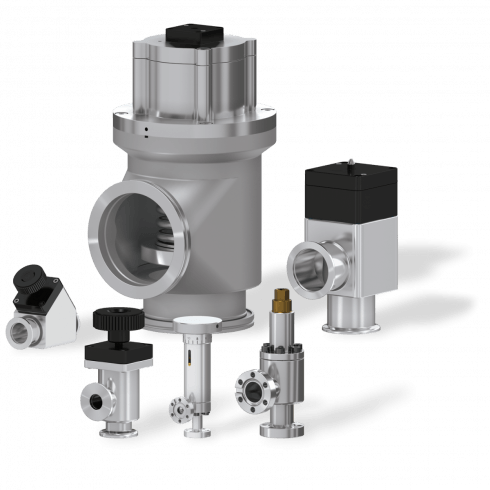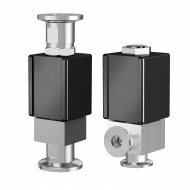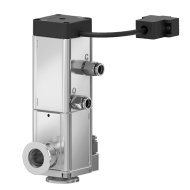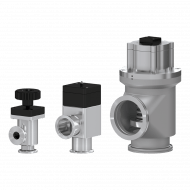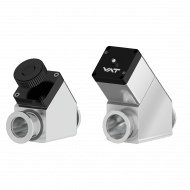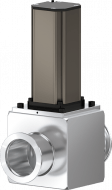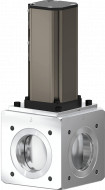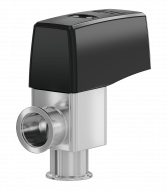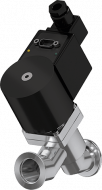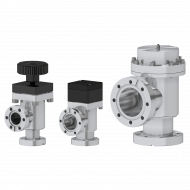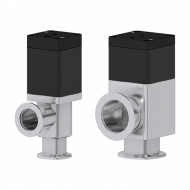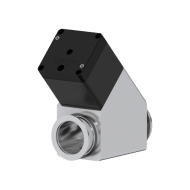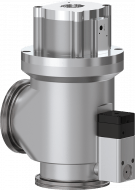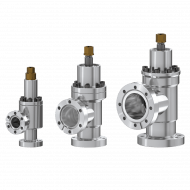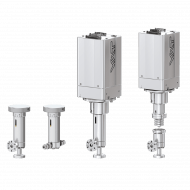FAQ Vacuum Angle / Inline / Cylinder Valves
What are Vacuum Angle, Inline, and Cylinder Valves?
These are types of valves specifically designed for controlling gas flow in vacuum systems. They vary in their design and orientation but serve the common purpose of regulating the flow of gases within a vacuum system.
How do Vacuum Angle, Inline, and Cylinder Valves differ?
Vacuum Angle Valves: These valves have a 90-degree bend in their design, allowing for changes in direction within the vacuum system. They are commonly used in applications where space constraints or specific piping configurations require a change in flow direction.
Inline Valves: Inline valves have a straight-through design, allowing gas flow in a linear direction without changing the flow path. They are suitable for applications where a straight-line flow is preferred or where space permits a direct flow path.
Cylinder Valves: These valves feature a cylindrical body design, often with a linear actuation mechanism. They are versatile and can be used in various orientations within a vacuum system, offering flexibility in installation and operation.
Inline Valves: Inline valves have a straight-through design, allowing gas flow in a linear direction without changing the flow path. They are suitable for applications where a straight-line flow is preferred or where space permits a direct flow path.
Cylinder Valves: These valves feature a cylindrical body design, often with a linear actuation mechanism. They are versatile and can be used in various orientations within a vacuum system, offering flexibility in installation and operation.
What are the key components of Vacuum Angle, Inline, and Cylinder Valves?
The main components typically include the valve body, actuator (manual, pneumatic, or electric), , sealing elements, and any additional features specific to the valve type, such as angle bends for angle valves or cylindrical bodies for cylinder valves.
What are the typical applications of these valves?
Vacuum Angle Valves: They are commonly used in vacuum chambers, semiconductor manufacturing, thin-film deposition, and other applications where changes in flow direction are required.
Inline Valves: Inline valves are versatile and find applications in vacuum systems for gas transfer, isolation, and control in various industries such as pharmaceuticals, chemical processing, and research laboratories.
Cylinder Valves: These valves are used in a wide range of vacuum applications, including vacuum drying, , vacuum furnaces, and vacuum coating processes.
Inline Valves: Inline valves are versatile and find applications in vacuum systems for gas transfer, isolation, and control in various industries such as pharmaceuticals, chemical processing, and research laboratories.
Cylinder Valves: These valves are used in a wide range of vacuum applications, including vacuum drying, , vacuum furnaces, and vacuum coating processes.
How do you select the right valve type for a specific application?
Considerations include the required flow rate, pressure range, material compatibility, space constraints, orientation within the system, actuation method, and any specific requirements or preferences dictated by the application or industry standards.
What are the advantages of using Vacuum Angle, Inline, and Cylinder Valves?
These valves offer advantages such as precise flow control, compatibility with vacuum environments, reliability, ease of installation, and flexibility in system design and configuration.

